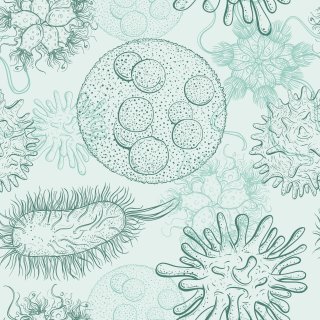Basic Information about Anaerobic Digestion
- What is Anaerobic Digestion?
- What Does the Anaerobic Digestions Process Make?
- How Do People Use the Products of Anaerobic Digestion?
What is Anaerobic Digestion?

Anaerobic digestion is the process by which microorganisms break down organic (carbon-based) materials in the absence of oxygen. In this instance, “organic” means coming from or made of plants or animals. The process occurs in spaces where there is no oxygen and can occur naturally in wetlands, rice fields, and landfills, as well as in enclosed, controlled environments. AD is often used to refer to the process of anaerobic digestion, and the built system where anaerobic digestion takes place is called a digester.
Anaerobic digestion is a form of organics recycling. Organics recycling is the process in which organic materials that would otherwise be landfilled or incinerated are collected and processed into new products, such as soil amendments. Some organics recycling solutions – including anaerobic digestion – also generate biogas, which facilities can capture and use for fuel and to generate electricity.
Facilities can process the following materials in an anaerobic digester:
- Animal manures.
- Food waste.
- Fats, oils, and greases.
- Industrial organic residuals.
- Wastewater solids (sewage sludge).
Co-digestion is the simultaneous anaerobic digestion of multiple organic materials in one digester, such as food waste and manure. All anaerobic digestion systems adhere to the same basic principles whether the feedstock is food waste, animal manures, or wastewater solids. The systems may have some differences in design but the process is basically the same.
Learn more about how anaerobic digestion works.
Anaerobic Digestion of Wasted Food
Anaerobic digestion is one way to manage wasted food. Learn about other management pathways in EPA’s Wasted Food Scale, which ranks pathways from most to least environmentally preferable.
What Does the Anaerobic Digestion Process Make?
The anaerobic digestion process generates biogas when microorganisms break down organic materials in the absence of oxygen. Biogas is mostly methane (CH4) and carbon dioxide (CO2), with very small amounts of water vapor and other gases. Facilities can remove the carbon dioxide and other gases, leaving only the methane. Methane is the primary component of natural gas.
The material that is left after anaerobic digestion is called digestate. Digestate is a wet mixture that is usually separated into solid and liquid portions. Digestate is rich in nutrients and can be used as fertilizer for crops. When anaerobic digestion takes place at a water resource recovery facility, we call the digestate biosolids.
How Do People Use the Products of Anaerobic Digestion?
-
Power engines, produce mechanical power, heat and/or electricity (including combined heat and power systems).
-
Fuel boilers and furnaces, heating digesters and other spaces.
-
Run alternative-fuel vehicles.
-
Supply homes and business through the natural gas pipeline.
The typically use low quality biogas in tougher, less efficient engines, such as internal combustion engines. Facilities, businesses, and others can use higher quality biogas that they clean of trace contaminants in more efficient, but also more sensitive engines.
Facilities can distribute biogas they treat to meet pipeline quality standards through the natural gas pipeline, which homes and businesses then use. Facilities can also clean biogas and upgrade it to produce compressed natural gas or liquefied natural gas. Cars and trucks can use CNG and LNG as fuel. Learn more about clean fuels/alternative fuels.
-
Bedding for livestock.
-
Flowerpots.
-
Soil amendments.
-
Fertilizers.
